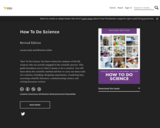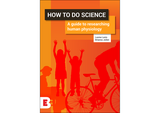
Revised Edition
Short Description:
'How To Do Science' has been written for students of the life sciences who are actively engaged in the scientific process. This guide introduces you to what it means to be a scientist. You will learn about the scientific method and how to carry out many tasks of a scientist, including: designing experiments, visualising data, accessing scientific literature, communicating science, and writing literature reviews.
Long Description:
How To Do Science has been written for students of the life sciences who are actively engaged in the scientific process. This guide introduces you to what it means to be a scientist. You will learn about the scientific method and how to carry out many tasks of a scientist, including: • designing experiments to test a hypothesis • performing simple statistics • visualising data by creating graphs and tables • accessing scientific literature, and using referencing software • communicating findings from original investigations through research papers, posters and oral presentations • writing literature reviews and summaries • communicating science to the non-expert audience
Word Count: 34892
ISBN: 978-0-6453261-3-0
(Note: This resource's metadata has been created automatically by reformatting and/or combining the information that the author initially provided as part of a bulk import process.)
- Subject:
- Anatomy/Physiology
- Life Science
- Material Type:
- Textbook
- Provider:
- University of Southern Queensland
- Author:
- Brianna Julien
- Louise Lexis
- Date Added:
- 06/16/2022
